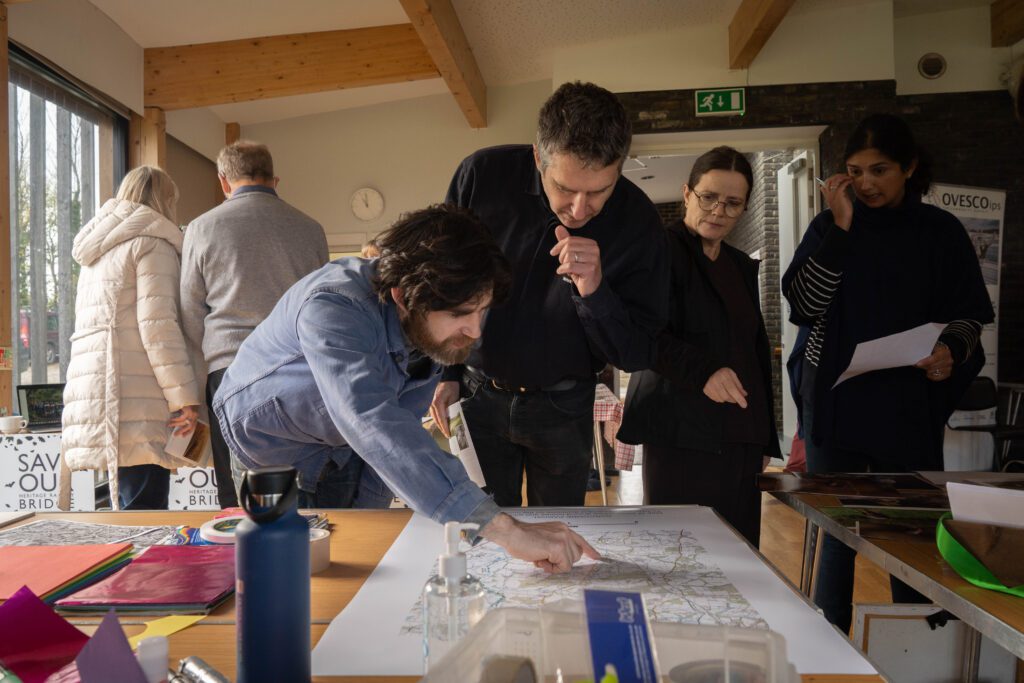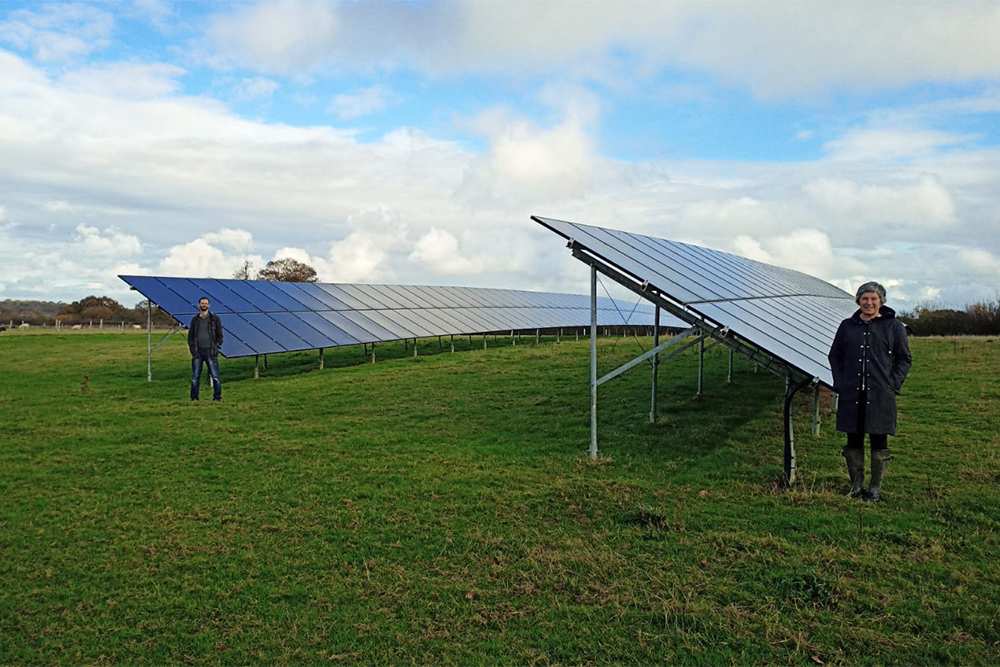
In this Q&A interview, we speak to Isobel Hammond, project lead for the CommuniHeat project. This community-led project has seen Isobel work closely with the residents of Barcombe, where the initiative is based.
More on CommuniHeat: Through CommuniHeat the book is being written on how to develop viable roadmaps for transitioning communities to net-zero carbon. This is being done through working with a real community; Barcombe in Sussex. The project is being undertaken in partnership with UKPN (UK Power Networks), to develop an understanding of costs associated with upgrading infrastructure and how this can be applied across the UK.

How did the CommuniHeat project start and how did Buro Happold become involved?
It began because of a piece of work we did for the Greater Brighton area, producing a regional decarbonisation strategy for the whole of Greater Brighton, which stretches from Gatwick Airport to Shoreham Port.
Through that process, we did a lot of stakeholder engagement and workshops with local authorities to industrial stakeholders to community energy groups. From there, community energy was identified as a key enabler for decarbonising this area, particularly due to its rural nature. A lot of the area is off the gas network, so is heavily reliant on oil.
To make the most of these findings, we started a conversation with Ovesco, who were partnering with Communiheat. The Barcombe project coupled Ovesco’s fantastic community engagement in this area, with our expertise in decarbonisation and digital engineering to help them create a plan for the community, making use of data Oversco had collected, and supplementing it with our own.
Furthermore, UKPN are our project partners, using Barcombe as a model to understand the cost associated with upgrading the infrastructure of off-gas communities, and looking to scale that approach up to the over 4 million homes like the 700 in Barcombe.
Why was Barcombe chosen as the initial test site and how has the community responded during the process?
Ovesco already have steering groups in place, with community events and webinars that get good attendance, pulling together great community engagement with the project.
Additionally, our own outreach has received a good response. Buro Happold created a digital twin of the village so residents can go in, click on their home and see their data displayed in an easy-to-understand format. From there they can get a better understanding of insulation levels in their house, what possible retrofits they can do and how that will reduce their energy demands and bills, as well as how much it’ll cost to install a heat pump and other systems.
To collect further data, we sent surveys around the village, asking for information on people’s homes and how they use energy. Within the surveys, we asked questions like would they get an electric vehicle, and if not, what are the barriers to this? This was to create a picture of not just numerical data, but also qualitative data to understand the decisions residents are making.
At the most recent event in Barcombe, the collaborators and Buro Happold attended to give talks. How do you feel the community felt about the value of having that face-to-face update on events like this?
It’s been invaluable.
After months of progress through online webinars, having an in-person event was great. People came over and were really interested in moving round their village on the digital twin, allowing them to click on their house and got excited about seeing their home and the possible options. We built the twin based off the data we had available, but it was a really good way to engage with residents because the digital twin may say a particular home has single glazing in their house, but they could interject and say actually they’d had double glazing installed five years ago or so.
The event highlighted to many the need to engage with us, so we can provide the most useful information. As a result of this, many went to the website, filled out the survey and allowed us to update our data from there.

There were also two government ministers at the most recent event, one of whom is a local MP. Do you feel the support at that level? Is it beneficial to the projects and if so, why?
It’s hugely beneficial.
For decarbonisation goals, legally binding targets have been set by the central government, with little idea on how this will be achieved on the ground, particularly in these rural communities that don’t have large budgets to put into decarbonisation. Without engaging with the communities themselves and getting them on board, it’s going to be really challenging to meet these targets.
Barcombe is one village of 700 homes, but there are four million homes across the UK are in a very similar position, where they may be stuck with a lack of guidance on how they can actually approach this.
Isobel Hammond, Energy Engineer, Cities Energy Consultancy, Buro Happold
That’s why we’re writing the book on how to decarbonise and using Barcombe as an example. I think it’s very useful for government representatives to better understand the sort of challenges and barriers people faces when transitioning away from oil, which may not be hugely understood at that level.
So how do you think this project plays into the goals of the UK to be net-zero by 2030 and COP26’s ambitions?
Not every community is going to be as engaged as Barcombe is. Collecting this data, doing analysis, and applying it to the wider building sector will be hugely impactful.
I think the scalable approach to this project is important, you can’t do this in-depth project on all 4 million homes, there has to be some kind of strategy implemented at a higher level.
Isobel Hammond, Energy Engineer, Cities Energy Consultancy, Buro Happold
From a Distribution Network Operator’s perspective, like UKPN in this case, it’s often the network infrastructure that’s seen as a barrier to implementing large-scale rollout of heat pumps in rural areas for example. This project is quantifying how much that is going to cost so it can be planned for and that barrier can be overcome. Furthermore, we can start tackling that barrier now, rather than in 2028, when the clock is ticking on decarbonisation deadlines and as a nation, we haven’t addressed these hard-to-reach communities.
Finally, how do you feel personally about working on this project?
I’ve really loved working on this project. It’s combined both the designs of these systems at a household and at a community level, and the expansion of my own knowledge of the digital engineering sector. I’ve seen the amount of data that goes into the digital twins, around 35 million different data points in the model, it’s been a really good learning experience.
Managing the collection and processing of all this data has been challenging and wouldn’t have been possible without the great team of engineers Phil Proctor put together from across Buro Happold. I have also gained so much insight into community energy financing through working with the Ovesco team and enjoyed building a model that helps them quickly assess the best options for investment.
Additionally, it’s great to know you’re making an impact in the community and to get feedback from them, making you feel what you’re doing is going to help.


